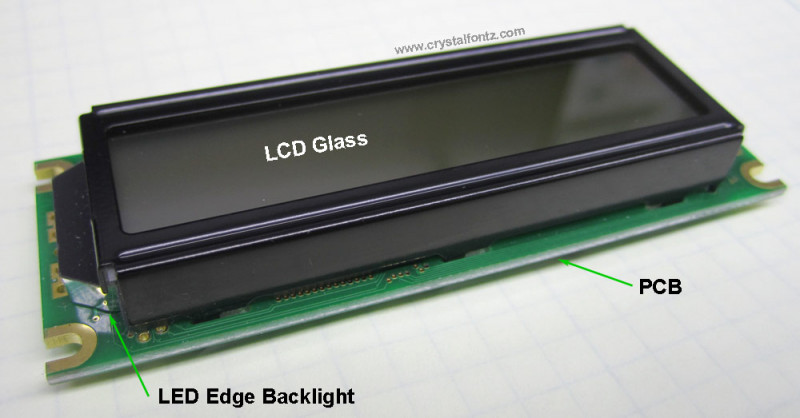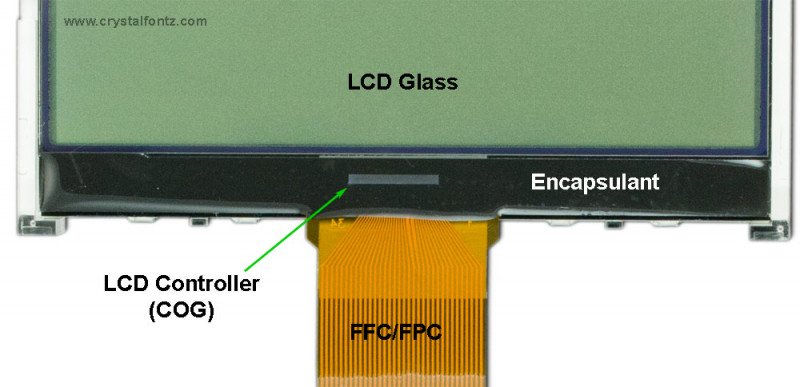LCM
LCM stands for Liquid Crystal Module or LCD Module. An LCM consists of an LCD or “LCD glass” and a connected LCD controller IC. In the US, LCMs are commonly called LCDs, although this is strictly incorrect. An LCM typically also includes a backlight.
Detailed Definition
Many LCMs have a PCB (printed circuit board) that functions as a mechanical chassis and connects the LCD controller IC to the LCD through zebras (conductive elastomeric strips). Mechanical tension holds the transparent conductors of the LCD against the zebra on one side and bare conductors of the PCB on the other, allowing signals from the LCD controller IC to travel to the LCD.
Mechanical tension holds the transparent conductors of the LCD against the zebra on one side and bare conductors of the PCB on the other, allowing signals from the LCD controller IC to travel to the LCD.

LCMs are not required to have a PCB or backlight. In what might be thought of as the simplest form of LCM, the LCD controller IC is mounted directly onto transparent conductors of the LCD glass using ACF (Anisotropic Conductive Film), with signals brought to the same glass through a FFC/FPC (Flat Flex Cable / Flexible Printed Circuit).

Questions?
If you have any questions, please contact our knowledgeable and friendly support staff by email, phone, or chat.